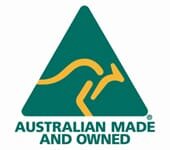 New developments in regional and remote areas are utilising wastewater treatment systems to combat water restrictions and meet environmental guidelines. Local council regulations are increasingly stipulating the use of such systems for sewage and greywater for developments outside of common effluent schemes. The Australian Government has also launched a $200 million funding program to encourage industry to implement water recycling initiatives. Today we look at reclaiming and reusing wastewater and the role safe environmental cleaning products play in this process.
New developments in regional and remote areas are utilising wastewater treatment systems to combat water restrictions and meet environmental guidelines. Local council regulations are increasingly stipulating the use of such systems for sewage and greywater for developments outside of common effluent schemes. The Australian Government has also launched a $200 million funding program to encourage industry to implement water recycling initiatives. Today we look at reclaiming and reusing wastewater and the role safe environmental cleaning products play in this process.
Parts of Western Australia experienced their driest winter on record in 2010 and ongoing water restrictions have highlighted the need for water conservation.
Despite floods and cyclones hammering Australia’s east coast in recent months permanent water restrictions also remain in place in Eastern states.
As the driest continent on Earth, Australia’s water resources and recycling initiatives have been high on the political agenda. The Federal Government unveiled a $200 million initiative in 2009 to fund stormwater harvesting and re-use projects. The funding was part of its $12.9 billion Water for the Future package.
Wastewater treatment systems offer solutions for commercial operations unable to tap into common effluent schemes or wanting to recycle water to irrigate lawns and gardens. They are being increasingly used by accommodation venues, function centres, mining camps, schools, factories and wineries, allowing operators to reclaim wastewater.
Wastewater treatment systems employ physical, biological and chemical processes to recycle rainwater, stormwater, greywater, blackwater (containing sewerage), groundwater and industrial water for irrigation of lawns and gardens as stipulated by local government.
New technologies are being developed to test the quality of treated greywater in light of the growing use of wastewater treatment systems. The CSIRO has been working to develop a national standard for treated greywater. This aims to iron out inconsistencies from separate state and territory legislation covering greywater collection, treatment and use. CSIRO Land and Water scientist Melissa Toifl said the protocol could be used to establish a national greywater treatment testing regime. “With this protocol we are anticipating a national approach in the way greywater treatment technologies are tested and regulated… (which could result in) increasing consumer adoption rates of greywater technologies.”
Combined septic and greywater treatment systems often employ aerobic treatment processes and require a delicate balance of bacterial flora. This can be upset by common cleaning chemicals. The use of environmental cleaning products is an important consideration for users of wastewater treatment systems.
Perth-based Envirosafe Solutions provides eco-friendly industrial liquids to industry and government sectors. Its products are low-toxic and biodegradable and include Extreme Green Solvent-Free Degreaser, Sanitiser/Mould Rid, Hard Water – Laundry Liquid, dishwashing liquid, anti-bacterial hand wash, dishwasher powder, disinfectant, dishwasher rinse aid, laundry powder and fabric conditioner.
Envirosafe Solutions’ Extreme Green Waste and Odour Treatment can be used in septic systems, porta-loos, animal enclosures and food preparation areas to eliminate odours and reduce sludge build-up. The Envirosafe Solutions range of laundry products have been specially designed for use in remote locations and are completely safe for hardwater and septic systems while delivering powerful results.
Australia’s scarce water resources offer a challenge for government and industry and wastewater recycling has increasingly been viewed as a partial solution to water restrictions. Envirosafe Solutions commitment to providing eco-friendly industrial liquids supports water recycling initiatives. For more information phone 1300 88 90 70 or email info@evss.com.au.
Sources:
http://www.environment.gov.au/water/publications/urban/fs-water-treatment.html
http://www.climatechange.gov.au/minister/previous/wong/2009/media-releases/March/mr20090323.aspx
http://www.csiro.au/news/Greywater-treatment-technologies.html






























